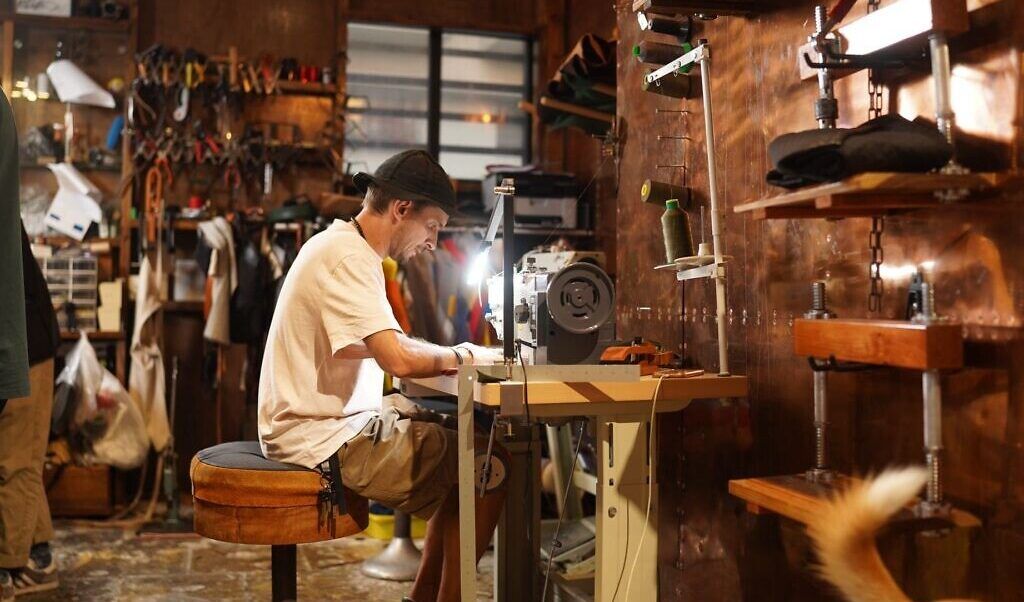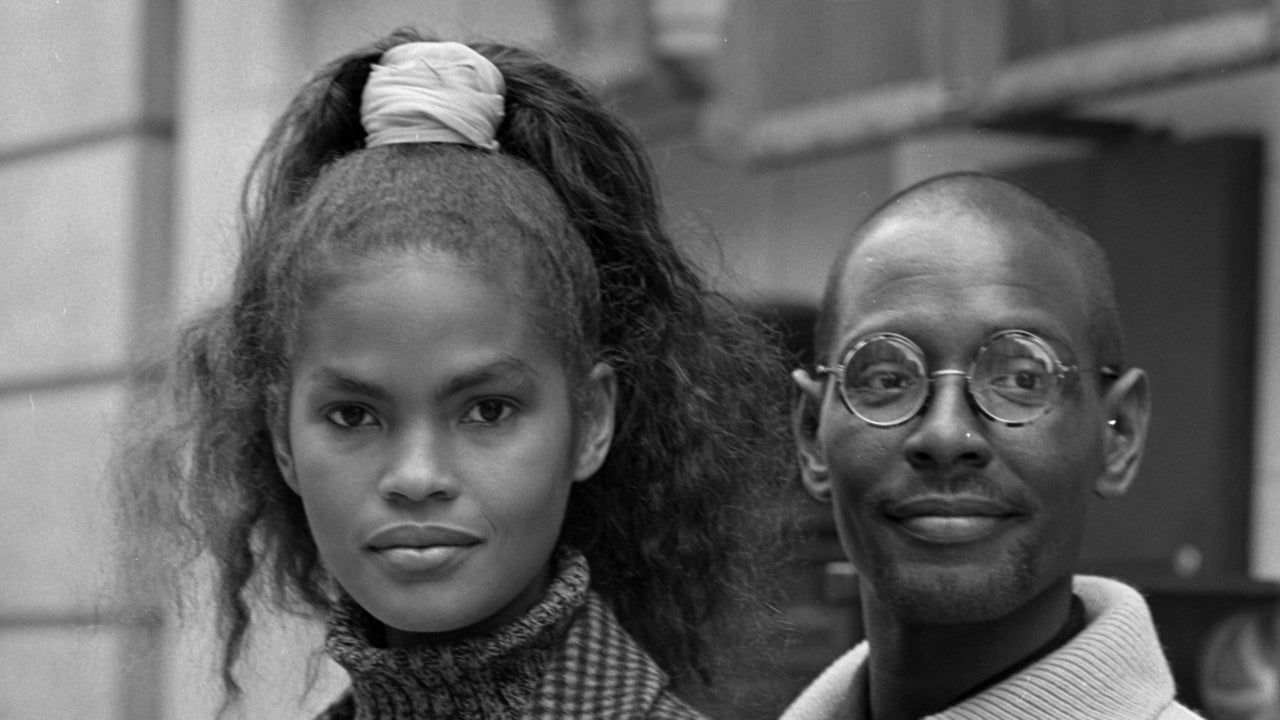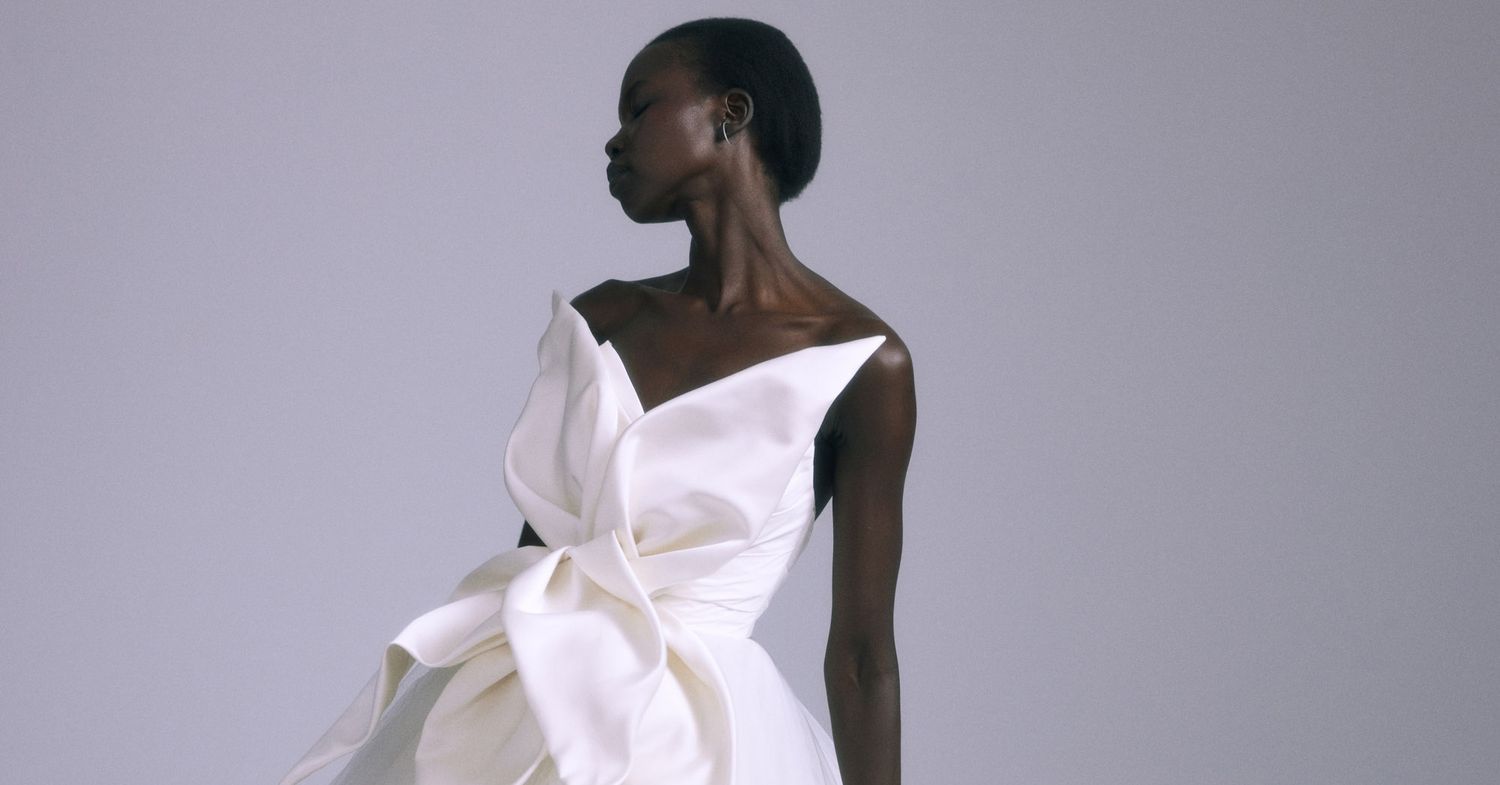In a classroom in Tel Aviv’s Shenkar College of Engineering and Design, dozens of sewing machines were going full speed, each table piled high with rectangular strips of army-green fabric.
With the country entering war mode, a volunteer army of 400 fashion designers, design students, Shenkar lecturers and graduates and one fashion journalist have been signing up for four- and five-hour shifts each day, designing, cutting, sewing and stitching the myriad pockets, tabs and straps that get attached to the ceramic bulletproof vests worn by combat soldiers.
The roomy pockets, sewn onto vests with large tabs for easy lifting, are geared for holding grenades, bullets, headlamps, maps and other battlefield necessities.
“Everyone switched from chiffon and linen to belts, canvas and twill,” said Ilan Beja, who directs Shenkar’s fashion design department. “You can’t play with any of this; it has to be this size and this weight. We have to be creative, flexible thinkers in all of this, turning from aesthetic to function.”
A day or two after the shocking events of October 7, in which Hamas terrorists burst through the Gaza Strip border fence, killed some 1,400 people in southern Israel, mostly civilians, and abducted over 200, Beja was contacted by someone in the defense establishment asking for help in sewing essential parts of army gear.
Around 360,000 reservists were called up in the immediate aftermath of Hamas’s massacres as Israel went to war against the terror group that rules the Gaza Strip, with the declared intention of eradicating it. It’s the largest mobilization since the 1973 Yom Kippur War.

Hundreds of volunteers work in shifts every day at Tel Aviv’s Shenkar design school, helping the IDF outfit gear for soldiers in the 2023 Israel-Hamas War (Courtesy Yahav Trudler)
“At first they were missing a few hundred pockets and tabs that are usually sewn on the ceramic vests for combat soldiers,” said Beja.
That request was enough for three Shenkar staffers — designer and lecturer Ofir Ivgi, technology expert, designer and senior lecturer Anna Solo, and designer and senior lecturer Maya Arazi — to get the volunteers up and running, gathering enough sewers to make one sample and then duplicate it.
That was just the beginning, said Beja. The requests keep coming in as “the numbers [of reservists] are so big,” said Beja. “Our studio and sewing rooms became a manufacturing line.”
The aim is to have the reservists be as prepared as possible, said Shelly Boneh, an industrial designer and Bezalel graduate who created a similar sewing workshop at Jerusalem’s Bezalel Academy of Art and Design.

A team of volunteers work in shifts every day at Jerusalem’s Bezalel art school, helping the IDF outfit gear for soldiers in the 2023 Israel-Hamas War (Courtesy Shelly Boneh)
The art school has sewn some 700 items in the last five days, said Boneh, who was vacationing in Thailand with her sister when the war began on October 7.
Boneh’s partner, a reservist in a special forces unit, was called up immediately, with his comrades already suffering losses from the Hamas attacks in the south. Boneh, who also served in a special IDF unit during her army service, began putting together a sewing workshop to supply what reservist soldiers require in order to function properly.
The Bezalel workshop now has 80 volunteers working 9 a.m. to 8 p.m., in coordination with the other workshops around the country, and the army’s own team of tailors.
At Tel Aviv’s Shenkar, some 100 people work in each shift, but Beja has to restrict the number of volunteers given the limited number of safe rooms available. Rocket attacks have been a frequent occurrence in Tel Aviv since the start of the war.
Each day, every sewing workshop around the country receives its assignment, said Boneh, and when it’s ready, the batch is picked up and brought to the army unit in need.

A team of volunteers work in shifts every day at Jerusalem’s Bezalel art school, helping the IDF outfit gear for soldiers in the 2023 Israel-Hamas War (Courtesy Shelly Boneh)
“We find out from the units what they’re missing,” said Boneh. “It’s things that need to be sewn from scratch. It’s not things you can buy, it’s not flashlights.”
The Bezalel workshop is accepting donations in order to buy supplies, which can be made through Bezalel in Israel and through Friends of Bezalel abroad.
At Shenkar, added Beja, the head of the textile department is from Kibbutz Re’im, the Gaza border community near the Supernova desert rave near where Hamas terrorists mowed down revelers, killing at least 260 people.
Now the workshop is also involved in making T-shirts and dry-fit shirts for the residents of Re’im, as well as Be’eri and Zikim, communities decimated by Hamas. It’s a little something to raise their morale, said Beja, and they’ve received some financial assistance from local technology companies.
“There’s so little we can do in a situation like this,” he said.
In Jaffa, designer Oz Zechovoy took his experience from his army service in Yiftach, a small unit of former fighters, industrial designers and engineers who develop special weapons and solutions — along with his professional work in hotel interior design, woodworking, custom cars and motorcycles and at Bio, his tiny home company — and turned that last week into a new kind of tactical vest for combat soldiers.

Oz Zechovoy tries on the new combat vest and and others created at the volunteer sewing workshop in Jaffa that designs and makes combat gear pieces for soldiers in the 2023 Israel-Hamas War (Courtesy Oz Zechovoy
He said it’s the most comfortable one he’s ever worn, and it looks good, too.
“It unintentionally looks like Gucci made it,” said Zechovoy.
By the middle of last week, Zechovoy and his partners at Havie, a nearby design studio, had put together an entire workshop of volunteers, industrial designers and others with experience making this type of gear for elite units.
Enlisted soldiers have the gear they need, but that’s not always true for reserve fighters, who often receive gear that isn’t custom-made for them. On the battlefield, “comfort is everything,” said Zechovoy. “If you need to pull out a gun or grenade, you have to do it fast. It’s as important as the right kind of suit when you get married.”
Most soldiers customize their own vests, but it’s a process that takes time, he noted. There need to be small pockets for maps, grenades, headlights, radios — “every person likes to have their gear on them,” he said. “It should be modular.”
Zechovoy, who was officially released from reserve duty years ago, was glued to the news for the first two days of the war, trying to understand what was happening, and knowing that some of his close friends were down south, fighting the terrorists.
He spent another frustrating day trying to volunteer, which included being fitted with an old, less-than-functional gun covered in blood, and second-rate gear for driving around on patrol in Ashkelon, a southern city that’s been hard hit by rocket fire and had a terrorist incursion in the second day of the war.
“They gave me gear, which looked as if it were 50 years old,” said Zechovoy, “Calling it vintage is a compliment. I was educated in the army that when you get your gear, you need to adapt it to make it work for you.”
He thought about the characteristics of his former unit, which is all about finding fast solutions to immediate problems.
[embedded content]
Zechovoy teamed up with Havie, his neighbors in Jaffa, and now they’re in touch with several elite units, asking what they need for medics and soldiers and quickly putting it together in the workshop.
The design entrepreneur is also using his knowledge of tiny homes, building a mobile sewing workshop inside a 4×4 van that was donated by a friend. He plans on stationing it in the south to fix what the troops need before they go into Gaza.
“If tomorrow I get a call to build an airplane, I’ll do what I can,” he said.




